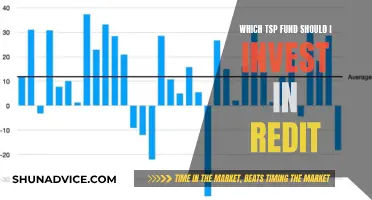
Investing in mutual funds is a popular choice for individuals looking to grow their wealth over time. Mutual funds are an investment vehicle where multiple investors pool their money, which is then invested by a fund manager across various asset classes. In India, the total assets under management (AUM) of the mutual fund industry stood at nearly Rs 38 lakh Crores at the end of March 2022. With rising investor awareness, the popularity of mutual funds is expected to grow further. Here are the steps to help you get started with investing in mutual funds in India:
- Start with risk profiling: Understand your risk tolerance and capacity. Knowing the amount of risk you can take before investing in mutual funds is essential.
- Asset allocation: Divide your money between various asset classes, including a mix of equity and debt instruments to balance the risk factors.
- Identify suitable mutual funds: Select funds that match your asset allocation plan and compare their past performance and investment objectives.
- Select and apply for a mutual fund scheme: Choose the specific scheme you wish to invest in and complete the application process, either online or offline.
- Diversify and monitor your investments: Ensure your portfolio is diversified to reduce risk and maximize returns. Regular follow-ups are important to ensure optimal results.
Before investing, it is important to fulfil the Know Your Customer (KYC) requirements and submit the necessary documents, such as a PAN card, proof of address, etc. Additionally, you can invest in mutual funds online through the official websites of asset management companies or mobile applications. Alternatively, you can invest offline directly with the fund house or through a broker.
| Characteristics | Values |
|---|---|
| Investment Vehicle | Pooling money from multiple investors and investing it in a variety of assets |
| Fund Management | Managed by highly qualified professionals/fund managers |
| Investor Choice | Variety of mutual funds, each with its own investment objective, risk profile and potential return |
| Benefits | Diversification, professional management, liquidity, accessibility, affordability flexibility, tax advantages |
| How to Invest | Online or offline, through fund houses, distributors, brokers, banks, or direct |
| Minimum Investment | Typically between Rs.500 and Rs.5,000, but varies by fund |
| KYC Requirements | PAN card, proof of address, recent photo, duly filled form |
What You'll Learn

Risk profiling
Understanding Risk Profiling:
- Risk profiling is a technique to evaluate an investor's tolerance for risk and their capacity to handle potential losses. It helps investors make informed decisions by choosing suitable mutual fund schemes that match their financial goals, time horizon, and risk preferences.
- Different investors have different risk profiles based on their personality, behaviour, and attitude towards risk. It's important to determine if you are a conservative, moderate, or aggressive investor.
Components of Risk Profiling:
- Risk capacity: This refers to how much financial risk an investor can afford to take based on their current and future financial position, including factors such as income, savings, expenses, and liabilities.
- Risk tolerance: This is an investor's personal comfort level with taking risks. It reflects their willingness to accept market fluctuations and potential losses to achieve their financial objectives.
- Risk requirement: This is the level of risk needed to achieve the investor's financial goals. It is influenced by the available resources and the potential returns associated with different investment options.
Process of Risk Profiling:
- Identify financial goals: Prioritize your financial goals based on their importance, urgency, and duration. Estimate the amount of money required and the expected rate of return for each goal.
- Determine your risk profile: Assess your risk appetite, risk tolerance, and risk capacity. Consider factors such as your life stage, income level, financial obligations, and investment experience.
- Choose suitable funds: Select mutual fund schemes that align with your risk profile and financial goals. Evaluate factors such as fund performance, expense ratio, exit load, and tax implications.
- Monitor and modify your portfolio: Regularly review and adjust your portfolio to ensure it remains aligned with your risk profile and financial goals. Periodically reassess your risk profile to account for any changes in your personal or financial circumstances.
Tools for Risk Profiling:
- Risk-reward ratio: Compares the expected return of a fund with the expected risk. A higher ratio indicates a higher potential return for a given level of risk.
- Standard deviation: Measures the volatility or variability of a fund's returns. A higher standard deviation indicates higher fluctuations in returns.
- Beta: Indicates the sensitivity of a fund's returns to the overall market or a benchmark. A beta of 1 means the fund moves in tandem with the market; greater than 1 indicates higher volatility, and less than 1 indicates lower volatility.
- Sharpe ratio: Measures the excess return of a fund per unit of risk. A higher ratio indicates a higher return for a given level of risk.
- Conservative investors: Prioritize safety and stability over high returns. They accept low or moderate returns in exchange for lower risk. Suitable investment options include debt funds, liquid funds, or hybrid funds with low equity exposure.
- Moderate investors: Seek a balance between risk and return. They are willing to take some risk but not excessively. Balanced funds, dynamic asset allocation funds, or hybrid funds with moderate equity exposure are appropriate for these investors.
- Aggressive investors: Have a high-risk appetite and a long-term investment horizon. They are willing to take significant risks for the potential of high returns. Equity funds, sectoral funds, or thematic funds with high equity exposure are suitable for aggressive investors.
- Investors can use tools and methods provided by fund houses or seek help from financial advisors to assess their risk profile. These tools consider factors such as age, income, expenses, liabilities, goals, and investment experience to provide a comprehensive assessment.
- Financial advisors can also recommend suitable funds, help diversify portfolios, and provide periodic reviews to ensure alignment with the investor's risk profile and financial goals.
- When investing in mutual funds in India, it is essential to complete the Know Your Customer (KYC) process, which includes submitting relevant documents such as proof of identity, address, and PAN card.
- Before investing, investors should refer to the Scheme Information Document (SID) of the mutual fund, which provides details about the fund's risk profile and investment objectives.
- Mutual funds in India use a "riskometer," a visual tool that helps investors quickly assess the level of risk associated with a particular fund, making it easier to match their risk tolerance with the fund's risk profile.
Investing Funds: Where to Start for Maximum Returns
You may want to see also

Asset allocation
In India, mutual funds typically invest in three broad categories of assets: equity, debt, and hybrid. Equity funds invest primarily in stocks and aim for capital appreciation. They offer higher returns but come with higher risks. Debt funds, on the other hand, invest in fixed-income instruments such as bonds and aim to generate income. They are less risky but offer moderate returns. Hybrid funds combine equity and debt investments, offering a balanced approach for investors with varying risk appetites.
When allocating your assets, it is important to consider your financial goals, risk tolerance, and investment horizon. If you are investing for the long term and can tolerate higher risks, you may allocate a larger portion of your portfolio to equity funds. On the other hand, if you are risk-averse and prefer stable returns, you may favour debt funds. Hybrid funds can provide a mix of both.
Dynamic Asset Allocation Funds (DAAF) are a type of hybrid fund that dynamically adjusts the allocation of equity and debt investments based on market conditions. These funds aim to provide optimal returns with minimal risk by rebalancing their portfolio as the market fluctuates. DAAFs are suitable for investors who are unsure about their risk appetite or portfolio allocation, as the fund manager actively manages the asset allocation on their behalf.
When investing in mutual funds, you can choose between lump-sum investments and Systematic Investment Plans (SIPs). Lump-sum investing involves investing a large sum of money all at once, while SIPs allow you to invest smaller amounts at regular intervals. SIPs are a popular choice for long-term financial goals, as they help with disciplined investing and can average out the cost of your investments over time.
A Guide to Investing in ICICI Liquid Funds
You may want to see also

Identify suitable funds
After determining your risk profile and asset allocation, the next step is to identify suitable funds that align with your investment goals and risk appetite. Here are some factors to consider when selecting a mutual fund:
- Investment objectives and past performance: Compare mutual funds based on their investment objectives, such as capital appreciation or income generation, and evaluate their past performance. This will help you understand how well the fund has performed over time and if it meets your investment goals.
- Risk and return profile: Different mutual funds have different risk and return profiles. Consider your risk tolerance and investment horizon when evaluating funds. If you are willing to take on higher risk, you may opt for equity funds. On the other hand, if you prefer moderate returns with lower risk, debt funds might be a better option.
- Fund manager's expertise: Assess the expertise and track record of the fund manager responsible for making investment decisions. A qualified and experienced fund manager, supported by a team of experts, can help ensure that the fund's investments are well-managed and aligned with its objectives.
- Expense ratio: The expense ratio represents the percentage of your investment that goes towards fees and other expenses incurred by the asset management company. Funds with lower expense ratios are generally preferable as they allow more of your money to go towards generating returns.
- Liquidity and fund size: Consider the liquidity and size of the fund. Larger funds tend to be more liquid, making it easier to buy and sell units. However, they may also come with higher costs. Ensure that the fund's liquidity meets your investment needs and aligns with your investment timeline.
- Complementary to existing investments: Choose a mutual fund that complements your existing investments and helps you achieve your financial goals. Diversification is essential to balance risk and return.
Equity Funds: Where to Invest and Why
You may want to see also

Select and apply for schemes
The first step in selecting a mutual fund scheme is to define your investment purpose and time horizon. Ask yourself what your financial goals are and how much time you would like to realise that purpose. For example, are you investing for the short term, such as saving for a down payment on a house, or for the long term, such as retirement? This will help you determine the type of mutual fund that is most suitable for you, whether it is a debt mutual fund, equity mutual fund, or hybrid mutual fund.
The next step is to assess your risk tolerance. Are you comfortable with taking on more risk for potentially higher returns, or would you prefer a more conservative approach with lower risk and potentially lower returns? Based on these two factors—your financial goals and risk tolerance—you can start shortlisting suitable fund categories, such as equity, debt, or hybrid funds.
When evaluating and comparing specific schemes, there are several parameters to consider. These include return expectation, risk tolerance, investment horizon, expense ratio, past performance, fund manager experience, and assets under management.
Return expectation refers to how much money you hope to make from your investment. Risk tolerance, as mentioned earlier, is your comfort level with the potential for losses. The investment horizon is how long you plan to invest for, which can be short-term or long-term. The expense ratio is the fee charged by investors for managing your investments, and it's important to target funds with lower expense ratios to maximise your returns. Past performance can give you an idea of how well the fund has done in comparison to its stated objectives, but it doesn't guarantee future results. Fund manager experience is also a factor to consider, as a more experienced fund manager may have a better track record and be able to make more informed decisions. Finally, assets under management (AUM) refer to the total market value of all the funds managed by the fund house, and it is believed that a higher AUM leads to a lower expense ratio.
Once you have considered all these factors and shortlisted a few suitable mutual fund schemes, you can start the application process. The HDFC Bank SmartWealth App is a useful tool that can assist you in selecting and applying for mutual fund schemes. It offers features such as Investment Profile, which suggests fund categories based on your risk appetite, and Fund Screener, which allows you to filter funds based on multiple parameters like returns, ratings, and AUM. You can also compare shortlisted funds on parameters like fund manager's experience, returns, ratings, AUM, expenses, and portfolio holdings analysis.
It's important to remember that investing in mutual funds involves risk, and past performance does not guarantee future results. Diversification is also key to managing risk, so as a beginner, it's recommended to start with 2-3 top-performing mutual fund schemes from different fund houses to avoid overlap and overdiversification.
Norway's Wealth Fund: A Guide to Investing
You may want to see also

Diversify and monitor investments
Diversifying your investments is a crucial step in managing your portfolio and reducing risk. Here are some tips for diversifying and monitoring your mutual fund investments in India:
Diversification Strategies:
- Expand Your Horizons: Diversify beyond traditional investments like stocks and bonds. Explore commodities, real estate, and exchange-traded funds (ETFs) alongside equities.
- Index Funds: Choose index funds that track prominent Indian indexes like the Nifty 50 or Sensex. These funds offer diversified exposure at a low cost.
- SIPs (Systematic Investment Plans): Utilize SIPs to invest fixed amounts regularly in mutual funds, cultivating a disciplined approach to saving and mitigating market volatility.
- Gold and Money Market Securities: Allocate a portion of your portfolio to gold, treasury bills, and certificates of deposit. These assets provide stability, liquidity, and security during market downturns.
- Global Opportunities: Look beyond Indian markets and consider investing in international funds or ETFs focused on emerging markets or specific regions for diverse investment opportunities.
- Rebalancing: Regularly review and rebalance your portfolio to maintain optimal asset allocation. Adjust your investments based on market conditions and investment goals, ensuring alignment with your risk tolerance.
- Understand Biases: Be mindful of cultural influences and financial biases that may impact your investment decisions. Evaluate risk appetite, family attitudes, and cultural beliefs to make informed choices.
- Asset Allocation: Diversify across different asset classes such as equity, debt, and gold. This ensures your portfolio is not overly exposed to any single asset class and reduces the impact of sudden macroeconomic changes.
- Number of Funds: The ideal number of funds depends on factors like your investable amount, investment goals, and risk profile. For equity mutual funds, 3-5 funds spread across different market segments and fund management styles are generally recommended.
- Correlation: Choose assets with low or negative correlation. This means their price movements are independent or opposite, so if one investment falls, the other might rise, stabilising your portfolio.
- Sector and Theme Diversification: Diversify your equity portfolio across sectors like pharmaceuticals, information technology, and consumer goods. Also, consider themes like rate-sensitive investments (banking, NBFCs, automobiles) and rural demand (tractors, two-wheelers, FMCG products).
- Company Diversification: Diversify within companies based on themes such as operating margins, asset turnover ratios, growth stocks, and dividend yield stocks.
Monitoring Investments:
- Regular Follow-ups and Reviews: Conduct regular follow-ups and reviews to ensure your investments are performing as expected and making the best decisions for your financial goals.
- Market Dynamics: Stay informed about factors influencing Indian financial markets, including monetary policies, interest rates, and economic indicators. Make investment decisions based on market trends and developments.
- Seek Professional Advice: Consult financial advisors or experts to develop a customised diversification strategy tailored to your circumstances and goals. They can guide you through the complexities of the Indian investment landscape.
A Guide to UAE Residents Investing in Vanguard Index Funds
You may want to see also
Frequently asked questions
First, assess your risk capacity and tolerance. Then, determine your asset allocation, identifying funds that invest in each asset class. Next, select the mutual fund scheme and decide whether to apply online or offline. Finally, diversify your investments and conduct regular follow-ups.
There are several costs to consider, including the expense ratio, transaction charges, exit load, securities transaction tax, and stamp duty.
Mutual funds offer professional management, diversification, liquidity, accessibility, affordability, flexibility, and tax benefits.
When selecting a mutual fund, consider your financial objectives, investment horizon, risk tolerance, and the fund's performance, expense ratio, liquidity, size, and fund manager's expertise.
Individuals can invest in mutual funds by visiting a branch office or designated Investor Service Centre (ISC) and submitting the necessary documents. They can also invest online through fund house websites or platforms, or via a mutual fund distributor registered with AMFI.







